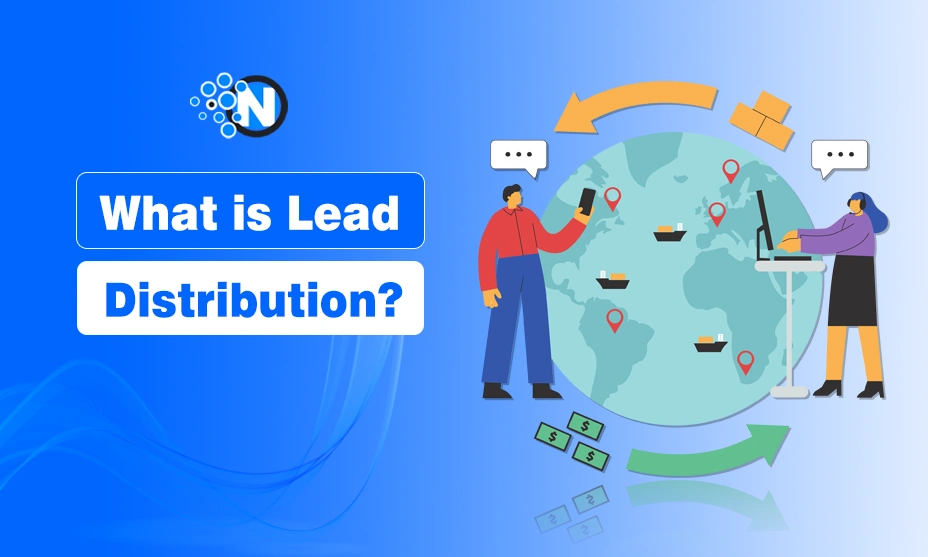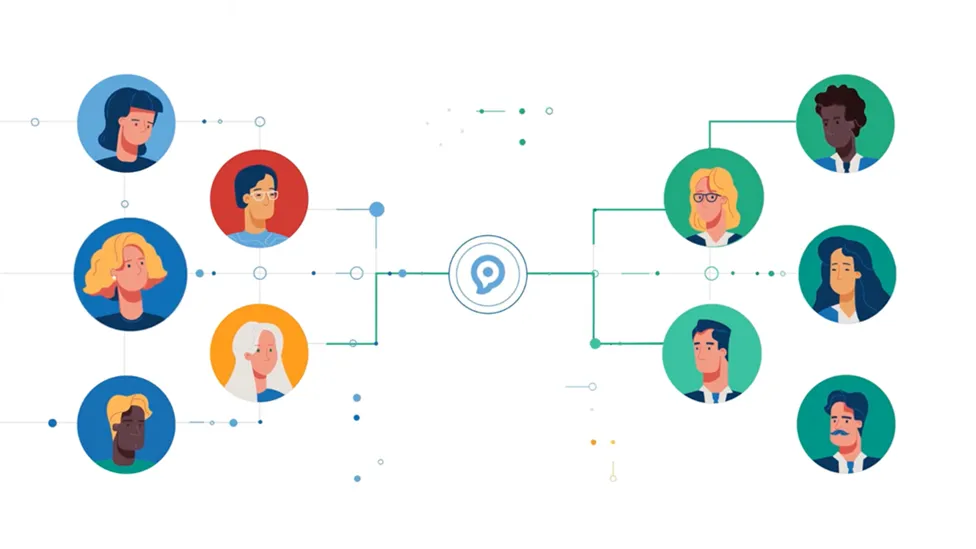What is Lead Distribution and How Does It Work?

Generating leads is only half the battle – the other half is to connect them with the product or service they are looking for while sending them on the conversion path.
Whether web or call leads, your consumers will only bring you profits if you distribute them to the best-matching internal sales rep or advertiser.
Multiple lead distribution software does exactly that – these matches leads to whoever can help them best based on the customer data collected throughout the customer journey and your customized lead distribution strategy.
As a result, all your leads receive customized experiences, granting you more conversions.
But we’re getting ahead of ourselves. Before elaborating on the value of lead distribution software, let’s shed light on the intricacies of the lead distribution process.
What is Lead Distribution?
Start creating Verdict in seconds, and convert more of your visitors into leads.
Lead distribution is the process of assigning incoming leads to the most appropriate person, team, or partner based on pre-set criteria.
These criteria includes on factors such as geographic location, lead source, lead type, buyer preferences, or salesperson availability.
What is Lead Distribution Software?
Lead distribution software is a tool that automatically assigns incoming sales leads to the most suitable sales representatives or teams based on predefined rules like location, availability, or expertise
Instead of manually sorting and assigning leads, a time-consuming and error-prone process – businesses today are turning to automate lead distribution technology systems that streamline and personalize the lead journey from the very first interaction.
Why Lead Distribution Matters?
Well, timing does matter. Contacting a web-submitted lead within the first five minutes is 2,000% more efficient than reaching out to the same lead in 30 minutes.
This is when distribution of lead kicks in!
- A lead distribution system connects leads to your internal sales department or a third-party company – an advertiser – based on the customer data, your lead distribution criteria, and the buyer’s requirement (the required type and number of leads, price per lead, etc.).
How Does Distribution Work?
Start creating Verdict in seconds, and convert more of your visitors into leads.
The core principle of lead distribution is matching the right lead with the right handler at the right time. Typically, a lead distribution process includes the following steps:
1. Lead Capture
The process begins when a visitor submits a form, makes a call, downloads an eBook, or engages with your brand in any lead-generating activity.
2. Lead Qualification
The lead’s information is analyzed to determine its readiness to buy. This may include demographic details, behavioral signals, and data from third-party tools.
3. Lead Scoring
Leads are scored based on their potential value, urgency, or match to your ideal customer profile.
4. Lead Routing
Based on predefined criteria, the lead is assigned to the most appropriate sales rep, partner, or advertiser.
5. Follow-up
The assigned contact initiates communication, using CRM or marketing automation tools to nurture the lead toward conversion.
📌Important Note: A well-integrated lead distribution system also ensures the lead data is automatically stored and updated across all sales and marketing platforms for better tracking and analytics.
Lead Distribution Methods
Start creating Verdict in seconds, and convert more of your visitors into leads.
Different businesses use different methods based on their needs, size, and target markets. Here are the most popular lead distribution methods:

1. Availability-based (round robin)
Connecting a customer immediately with an available sales rep makes the most sense for a homogenous audience (for example, if you sell car insurance in Florida to Floridians).
For heterogenous leads, though, the availability-based distribution may hamper the quality of service.
2. Performance-based
Prioritizing your top agents is a great distribution strategy for your most profitable leads, as you will likely convert more of them than using any other lead routing model.
At the same time, you will have to sacrifice the progress of other agents and may even face a risk of discord in your sales team.
3. Location-based
For national and international businesses, distributing leads based on location – for example, country or state – can increase the conversion rate, as leads will always get a knowledgeable agent on the other end.
The other similar lead distribution models include language-based and timezone-based distribution.
4. Buyer Criteria-Based
The buyer’s size can become a factor if you sell leads to several advertisers or an affiliate network. That said, you must also consider the buyer’s relevancy not to risk your reputation.
5. Free pick
Letting your sales reps or advertisers cherry-pick the leads they want to get creates an open market where participants compete for your leads. All things equal, whoever offers the higher price gets the lead.
6. AI-Driven or Predictive Routing
Modern systems use AI and machine learning to predict the best possible match for a lead based on historical data, rep performance, and engagement probability.
Best Practice: Many businesses benefit from hybrid routing while combining multiple methods (e.g., round robin during peak hours and performance-based during low volume hours).
Benefits of a Lead Distribution System
Start creating Verdict in seconds, and convert more of your visitors into leads.
Implementing an intelligent lead distribution process offers many advantages like,
1. Scalability
Distributing leads instantly to the most appropriate sales rep keeps your pipeline running no matter how many leads you process at any given time.
With a well-designed lead distribution system, your agents will always be able to handle the offered leads.
2. Automation
Automating your lead distribution process saves time, increases customer engagement, enables timely communications, and opens upselling opportunities.
Likewise, automation eliminates distribution mistakes and ensures your leads get where you want them to.
3. Sales Reps’ Performance
Unlocking valuable customer insights – demographics, psychographics, history of purchases, and more – timely put an agent in the driver’s seat of the conversion process while saving the consumer’s time through the sales lead distribution methods.
4. Fair Lead Market
A lead distribution system ensures all parties of a lead market get a fair deal by enabling multiple ‘buy’ and ‘sell’ filters.
For example, as a lead supplier, you can choose what type of leads you want to sell to what advertisers and how much you want to get per lead.
5. Reliability
Assigning leads to the right agents consistently, timely, and without mistakes will grow your reliability in the eyes of your customers and business partners.
6. Unification
Real-time access to customer insights enables marketing and sales teams to work together seamlessly, delivering personalized experiences that boost engagement, conversions, and overall sales performance.
7. Cost Reduction
Manual routing is inefficient and error-prone. Automating this process reduces administrative overhead and minimizes lead waste.
Real-World Applications of Lead Distribution
Start creating Verdict in seconds, and convert more of your visitors into leads.
Lead distribution is vital across many industries:
- Real Estate: Connects potential buyers to local agents based on location and property interests.
- Insurance: Routes leads based on coverage type (health, auto, home) and agent licensing.
- Healthcare: Assigns patient leads to nearby clinics with the right specialists.
- Education: Matches student inquiries to admission reps based on courses or campuses.
- Finance: Allocates loan or credit inquiries to licensed reps or financial advisors.
💡Pro Tip:
If your business operates in a high-volume, high-competition market, lead distribution is not optional – it’s essential.
Final Thoughts
Start creating Verdict in seconds, and convert more of your visitors into leads.
Lead distribution is the bridge between capturing interest and closing a deal. With the right system in place, you ensure every lead receives timely, personalized attention that increases the chances of conversion.
You will tap into untapped markets quicker, collect more data on your prospects, increase sales, and develop long-term value-based relationships with consumers.
The bottom line is that lead distribution software does exactly what you can do manually, but quicker and incomparably better.




